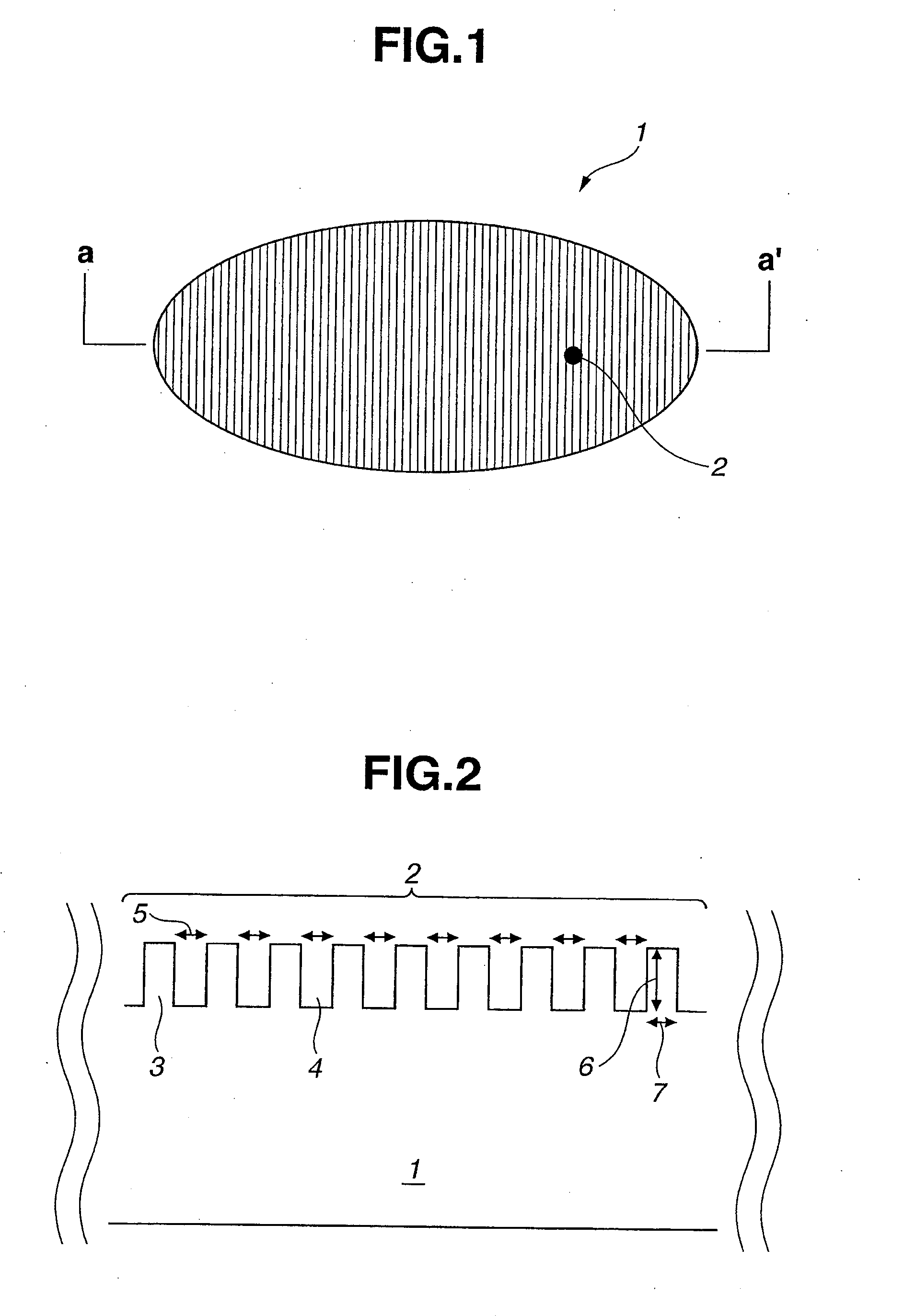Chemical for Forming Protective Film
- Summary
- Abstract
- Description
- Claims
- Application Information
AI Technical Summary
Benefits of technology
Problems solved by technology
Method used
Image
Examples
example 1
[0162](1) Preparation of Liquid Chemical for forming Protective Film
[0163]A mixture of: 3 g of semiconductor-grade trimethylmethoxysilane [(CH3)3SiOCH3] that serves as a silicon compound (A); 1 g of semiconductor-grade trifluoromethanesulfonic acid [CF3SO3H] that serves as an acid; and 96 g of a semiconductor-grade fluorine-based solvent (Novec HFE-7100 produced by 3M Limited: Hydrofluoroether) that serves as an organic solvent was prepared to obtain a liquid chemical for forming a protective film. Furthermore, a water content was removed from the liquid chemical by using a molecular sieve 4A (produced by UNION SHOWA K.K.). Thereafter, metal impurities were removed from the liquid chemical by using an ion-exchange resin (IonKleenTM SL Purifier produced by Pall Corporation), followed by removing particles from the liquid chemical by filtration separation (Optimizer produced by Nihon Entegris K.K.), thereby conducting purification. The water content in the liquid chemical after purifi...
examples 2 to 57
[0169]Upon modifying the conditions employed in Example 1 (i.e., the silicon compound (A) (or the silicon compound (C)), the concentration of the silicon compound (A), the acid, the concentration of the acid, the base, the organic solvent, the procedures carried out after the surface treatment using the liquid chemical for forming a protective film, and the like), a surface treatment was conducted on wafers, followed by evaluation of these. Results are shown in Tables 1 and 2.
TABLE 2Liquid Chemical for forming Protective FilmStarting MaterialConcentrationSiliconof SiliconAcidOrganic SolventCompoundCompoundConcentrationAlcohol(A)(A) [mass %]Acid[mass %]KindSolventExample 31(CH3)3Si—OCH33CF3SO3H1HFE-7100—Example 32(CH3)3Si—OCH33CF3SO3H1HFE / 7100 / PGMEA—Example 33(CH3)3Si—OCH33CF3SO3H1HFE-7100 / iPAiPAExample 34(CH3)3Si—OCH33CF3SO3H1CTFP / PGMEA—Example 35(CH3)3Si—OCH33CF3SO3H1HFE-7100—Example 36(CH3)3Si—OCH33CF3SO3H1HFE / 7100 / PGMEA—Example 37(CH3)3Si—OCH33CF3SO3H1HFE-7100 / iPAiPAExample 38(CH...
example 58
[0179]The procedure of Example 1 was repeated with the exception that 3 g of trimethylchlorosilane [(CH3)3SiCl] that serves as a silicon compound (B) and a mixed solvent of 5 g of 2-propanol (iPA) and 92 g of HFE-7100 which mixed solvent serves as an organic solvent were mixed to initiate a reaction as represented by the following equation thereby obtaining a liquid chemical for forming a protective film, the liquid chemical containing trimethylisopropoxysilane as the silicon compound (A), hydrogen chloride as the acid, and HFE-7100 as the organic solvent. Results of the evaluations are as shown in Table 3. The contact angle obtained after the surface treatment was 68° and therefore a water-repellency-imparting effect was exhibited. Additionally, the capillary force obtained in the case where water was retained was so small as to be 1.2 MN / m2. Additionally, the contact angle obtained after UV irradiation was smaller than 10°, which means that removal of the protective film was achie...
PUM
| Property | Measurement | Unit |
|---|---|---|
| Percent by mass | aaaaa | aaaaa |
| Volume | aaaaa | aaaaa |
| Bond length | aaaaa | aaaaa |
Abstract
Description
Claims
Application Information
 Login to View More
Login to View More - R&D
- Intellectual Property
- Life Sciences
- Materials
- Tech Scout
- Unparalleled Data Quality
- Higher Quality Content
- 60% Fewer Hallucinations
Browse by: Latest US Patents, China's latest patents, Technical Efficacy Thesaurus, Application Domain, Technology Topic, Popular Technical Reports.
© 2025 PatSnap. All rights reserved.Legal|Privacy policy|Modern Slavery Act Transparency Statement|Sitemap|About US| Contact US: help@patsnap.com



